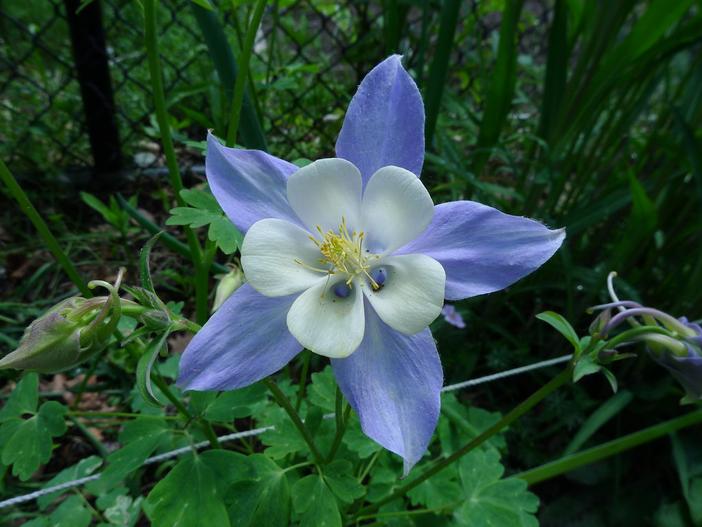Rocky Mountain Columbine
(Aquilegia caerulea)
Rocky Mountain Columbine (Aquilegia caerulea)
/
/

Alvin Kho
CC BY-SA 2.0
Image By:
Alvin Kho
Recorded By:
Copyright:
CC BY-SA 2.0
Copyright Notice:
Photo by: Alvin Kho | License Type: CC BY-SA 2.0 | License URL: https://creativecommons.org/licenses/by-sa/2.0/ | Uploader: chipmunk_1 | Publisher: Flickr





















Estimated Native Range
Summary
Aquilegia caerulea, commonly known as Rocky Mountain Columbine, is a deciduous perennial herb native to the Rocky Mountains of North America, particularly found in moist woods, open mountain meadows, and along streams. It typically grows to 20–60 cm (7.9–23.6 in) tall and is known for its distinctive and variable flowers, which bloom from late spring to early summer. The flowers are nodding with elongated hollow spurs and can be pale blue, white, pale yellow, or pinkish, often with bicolored sepals and petals that contrast beautifully. The foliage is delicate and lobed, adding to its ornamental value.
Rocky Mountain Columbine is celebrated for its striking flowers, which are highly attractive to hummingbirds and butterflies, making it a valuable addition to wildlife gardens. It is also a popular choice for rock gardens, borders, and woodland plantings due to its ease of maintenance and natural charm. While it prefers evenly moist soils, it is somewhat drought-tolerant once established. It thrives in full sun to part shade and requires well-drained soil. ’Origami’ is a compact cultivar with large flowers and a long blooming period, while ’Crimson Star’ boasts red and white bicolored blooms. Despite its beauty, Aquilegia caerulea can be susceptible to leaf miners and powdery mildew, and it may self-seed prolifically if not deadheaded.CC BY-SA 4.0
Rocky Mountain Columbine is celebrated for its striking flowers, which are highly attractive to hummingbirds and butterflies, making it a valuable addition to wildlife gardens. It is also a popular choice for rock gardens, borders, and woodland plantings due to its ease of maintenance and natural charm. While it prefers evenly moist soils, it is somewhat drought-tolerant once established. It thrives in full sun to part shade and requires well-drained soil. ’Origami’ is a compact cultivar with large flowers and a long blooming period, while ’Crimson Star’ boasts red and white bicolored blooms. Despite its beauty, Aquilegia caerulea can be susceptible to leaf miners and powdery mildew, and it may self-seed prolifically if not deadheaded.CC BY-SA 4.0
Plant Description
- Plant Type: Herb
- Height: 1-2 feet
- Width: 0.8-1 feet
- Growth Rate: Moderate
- Flower Color: Blue, White
- Flowering Season: Spring, Summer
- Leaf Retention: Deciduous
Growth Requirements
- Sun: Full Sun, Part Shade
- Water: Medium
- Drainage: Medium
Common Uses
Bee Garden, Bird Garden, Border Plant, Butterfly Garden, Deer Resistant, Hummingbird Garden, Potted Plant, Rabbit Resistant, Showy Flowers
Natural Habitat
Moist woods, open mountain meadows, and along streams
Other Names
Common Names:
Scientific Names: , Aquilegia caerulea, Aquilegia caerulea var. albiflora, Aquilegia caerulea subsp. pinetorum, Aquilegia caerulea f. glandulosa, Aquilegia caerulea f. pallidiflora, Aquilegia caerulea subsp. albiflora, Aquilegia caerulea subsp. alpina, Aquilegia caerulea subsp. daileyae, Aquilegia caerulea var. macrantha
GBIF Accepted Name: Aquilegia caerulea James